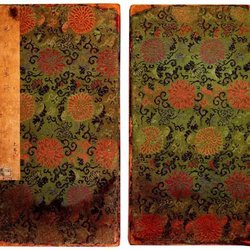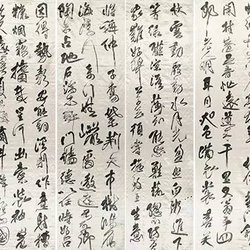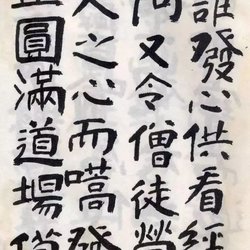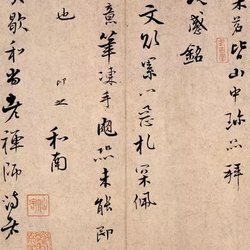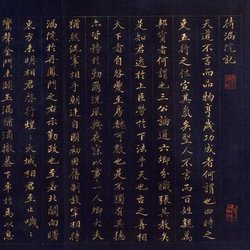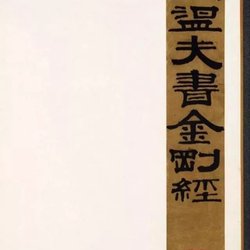Why is Zhang Jizhi so great?
In 2015, the public account "Beijing Poly Auction" exhibited Zhang Jizhi's "Fragments of the Huayan Sutra in Regular Script". Note: This volume is not the one that is widely reproduced by various public accounts, and there is very little information on the Internet. introduce.
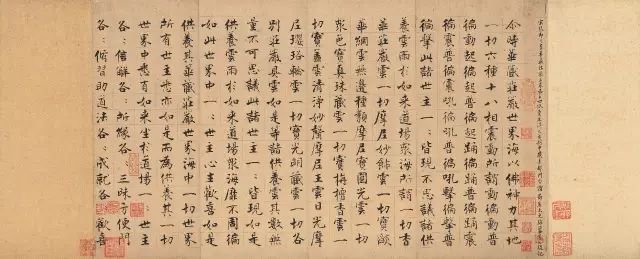
"Fragments of the Huayan Sutra in Regular Script" (Part)
Zhang Jizhi's "Fragments of the Huayan Sutra in Regular Script"
Hand scroll ink on paper
The center of the painting: 34x60cm, the title and postscript: 34x296cm
Among them, when introducing Zhang Jizhi’s calligraphy, there is a passage that is particularly important:
The rise and influence of regular script represented by Zhang Jizhi
The rise of the four schools of Su, Huang, Mi and Cai in the Northern Song Dynasty. In the early Southern Song Dynasty, Zhao Gou promoted the retro style and advocated both regular script and cursive script. He also practiced writing "The Stone Classic", "True Grass Health Theory", "True Grass Thousand-Character Essay", etc. Regular script works; in the middle period, there were the "Four Masters of ZTE" - Lu You, Fan Chengda, Zhang Xiaoxiang, Zhu Xi and others, ushering in the heyday of Southern Song culture; by the end of the Southern Song Dynasty, social order was chaotic, culture continued to decline, and calligraphy declined. As a result. Therefore, Fang Xiaoru said in "A Thousand-Character Postscript on Zhao Zi'ang" (Volume 18 of "Xunzhizhai Collection"): "In the third year of the Song Dynasty, calligraphy was completely wiped out."
In the late Southern Song Dynasty when there was a lack of talented people and a sluggish calligraphy style, Zhang Jizhi's status seemed to be particularly important, especially in regular script. Regular script reached its peak from the Wei and Jin Dynasties to the Tang Dynasty. The achievements of the Song Dynasty were far inferior to those of the Tang Dynasty. Except for Cai Xiang, the other four schools of the Song Dynasty were not good at developing regular script. Ouyang Xiu sighed: "Don't waste the calligraphy in the Song Dynasty." Although it cannot In a nutshell, it explains the decline of regular script in the Song Dynasty from one aspect. Although Zhang Jizhi could not completely turn the tide and revive the decline, his large number of regular script writing works throughout his life inadvertently played the role of Zhongxing regular script, and his influence on later generations is also known as regular script. ...In the Southern Song Dynasty when regular script was in decline, Zhang Jizhi tried his best to reverse the decline and incorporated Zen into the book, which had a profound influence.
Under the circumstances at that time, Zhang Jizhi was not only famous for his excellent calligraphy skills and profound skills, but also played a role in connecting the past and the future in calligraphy, and had a profound impact on later generations, especially on Zhao Mengfu and Wang Wenzhi. . Xie Jin wrote this in "Chun Yu Miscellanies": Du Wuxing, Zhao Wenmin, Meng Fu and Zhang Jizhi did good deeds, and got the biography of Nangong. …
Zhang Jizhi's calligraphy status is so important, but we still relatively ignore it, and public accounts rarely mentioned this before.
"Republic of China Painting Matters" @华事君 A passage in a recent article resonated with the author: We all know that the Song Dynasty was the golden age of Chinese literati, but being a calligrapher in the Southern Song Dynasty was a very hard job. When it comes to discussing law, the Tang Dynasty people have reached the pinnacle, and when it comes to discussing meaning, the four masters of Su, Huang, Mi, and Cai have also played it to the extreme. Just like the highway during the Golden Week, there are roads in the world, but there are too many people walking on them, so there are no roads. In this dilemma with no way out, a giant Zhang Jizhi squeezed in and forced his way out of the crowd. People in the Southern Song Dynasty liked to talk about "Neo-Confucianism", so Zhang Jizhi's writing can be regarded as "not following Neo-Confucianism". How could Zhang Jizhi be unreasonable (Neo-Confucianism)? We have published an article before, "Zhang Jizhi, the Winger Master". You talk about center, but I want to be a winger. "Painting Matters of the Republic of China" @华事君 gave a very specific example: Looking at a piece of calligraphy, not only does it have no words, but the content is also garbled: "The thatch will benefit people and stay in the nunnery." What does it mean?
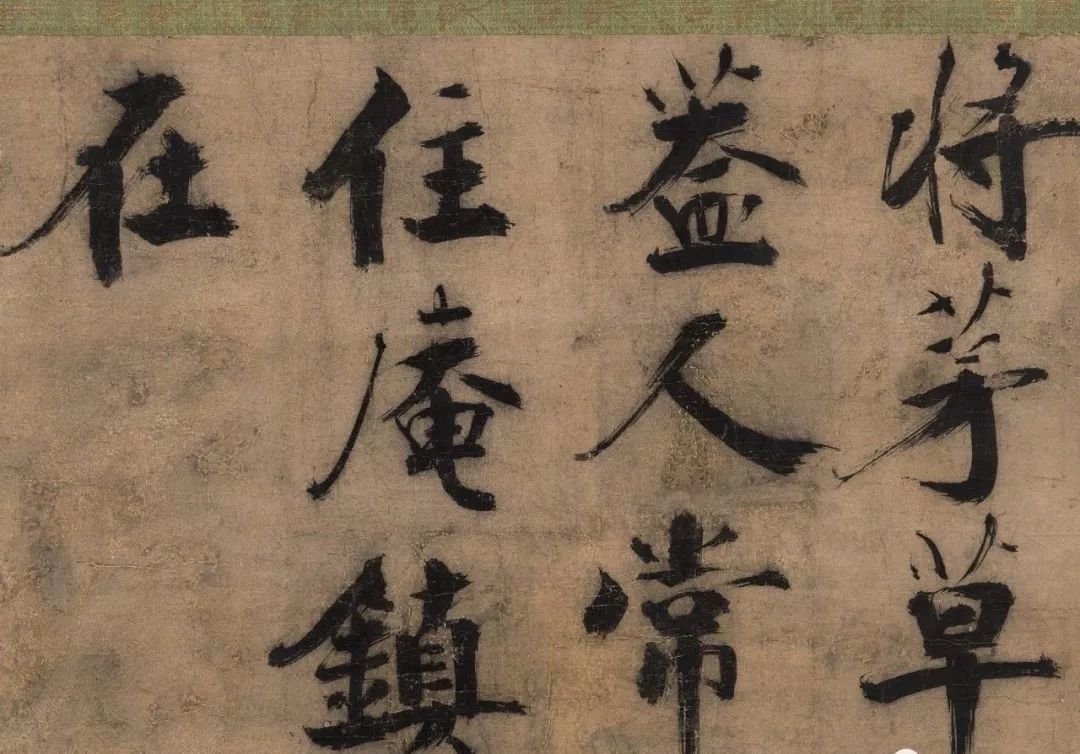
Lot 470
Zhang Jizhi's regular script
Ink on paper vertical scroll
Question: If the thatch grows, people will live there forever, and the nunnery will remain.
Published: "The Aftertaste of the Song and Yuan Dynasties" P13, Wolu Art Museum, 2018.
34.5×49.3 cm. About 1.5 square feet
Japanese yen: 5,000,000-7,500,000
RMB: 300,000-450,000
In fact, it comes from "Song of Cao'an" written by the Zen master Shitou Xiqian in the Tang Dynasty. It has eight paragraphs in total. These lines are from the first paragraph. The original verse is:
There are no treasures in my thatched hermitage, so I try to sleep quickly after dinner.
When it is established, new thatch appears; when it is broken, it will be covered with thatch.
For those who live in the nunnery, the town is always there, not in the middle or inside or outside.
I do not live where the world lives, and I do not love where the world loves me.
So why does it become gibberish? The painter carefully observed the original work and found traces of rectangular cut-outs, indicating that it was re-mounted like this. It should be that the work was damaged to a certain extent and some words were lost, so the remaining words had to be cut and patched on rice paper. Use the PS technology on the website to modify it into a piece of text that can be understood smoothly.
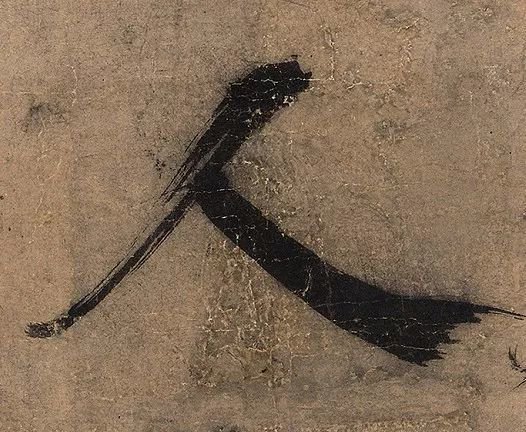
You say you want to play as a center forward, but he prefers to play as a winger. You say his pen is thin, hard and dry, but his small handwriting is charming and beautiful.
We have talked about the fragment of the Huayan Sutra written by Zhang Jizhi before, saying that it is like the breath of a beautiful woman, lingering before the eyes. This statement was also quoted by the auctioneer during the auction. Let's review Zhang Jizhi's handwriting of small characters. This A connecting stroke as thin as a hair, does it feel like the breath is lingering and the breath is like orchid?
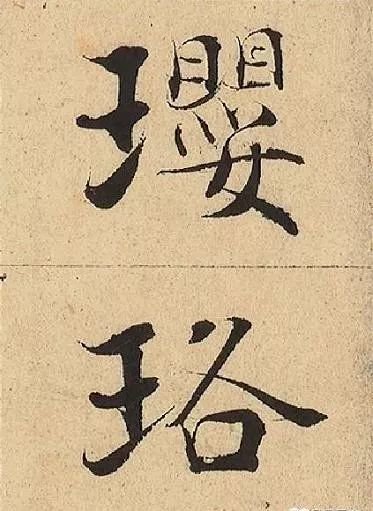
Part of Zhang Jizhi's "Huayan Sutra in Regular Script", these two characters have also become popular recently.
As for this work, although it has been cut and moved, and the flow of Qi has been weakened, the flow of Qi inside the single characters is still very charming.
More importantly, it has the unique beauty of Zhang Jizhi’s big characters: one word can sum it up: cool! This kind of refreshing is the refreshing feeling of iron painting and silver hook, the refreshing feeling of walking quickly in the clear autumn, and the refreshing feeling of a Zen master who has faced the wall for ten years and gained enlightenment in one day.
Writing this kind of cool calligraphy relies on side strokes, and most of the force is exerted in the middle and upper parts of the strokes, so it can be done in one stroke and never sloppily.
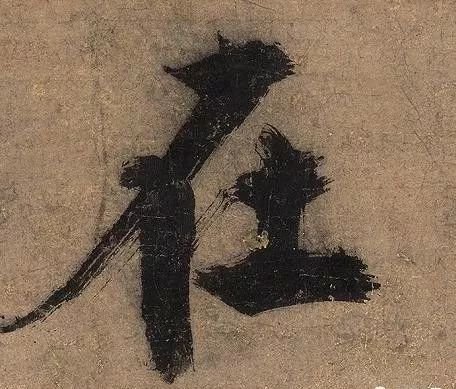
Every word appears with dry pen, and the whiteness is just right, highlighting the strength of muscles and bones and the speed of writing.
It is said that Zhang Jizhi was called the reincarnation of "Narcissus" by the people in the Song Dynasty. This "narcissus" was not a daffodil, but a water fairy. Therefore, his calligraphy also has the property of fire protection - many of Zhang Jizhi's works are collected in famous mountains and ancient temples. On the one hand, it is because of the subject matter of the scriptures themselves, and on the other hand, it may also be because the temples are for fire protection.
When Zhang Jizhi was alive, his calligraphy had spread to Japan. For example, the "Abbot" inscription by Zhang Jizhi in the Tofukuji Temple in Kyoto was obtained by the founding father from the Southern Song Dynasty. The side stroke technique is very similar to this one.
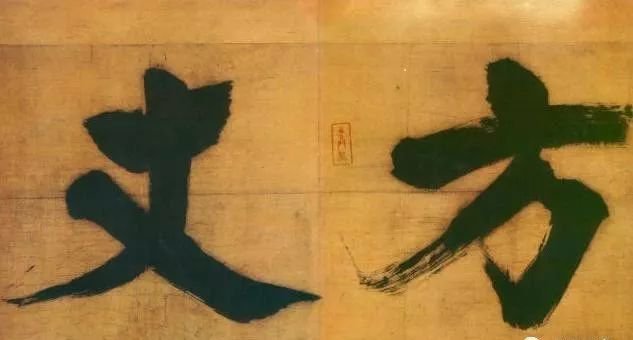
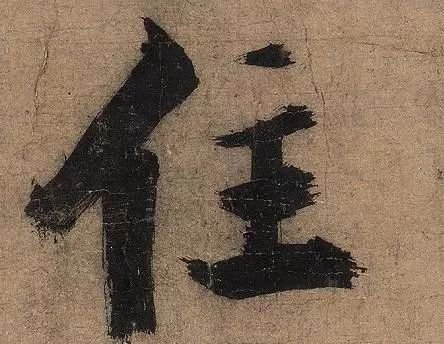
In terms of size, the height of this "Cao'an Song" is 34.5 centimeters, which is obviously the height of a hand scroll. I think it was probably a calligraphy hand scroll at that time. It was brought to Japan by Zen masters during the Song and Yuan Dynasties. The content is Cao'an Song, the beginning of which It may have been damaged, cut off, and reassembled to form this vertical scroll. Although there are only a few fragmentary words left, they are still very precious.

